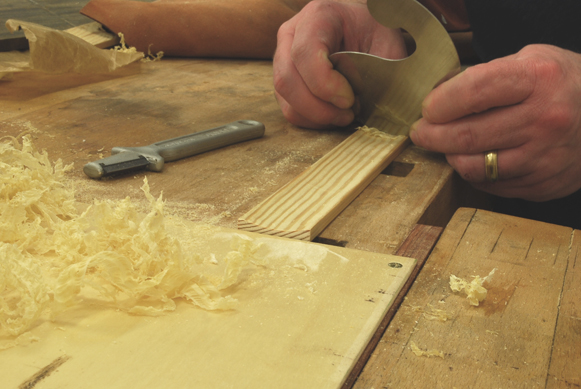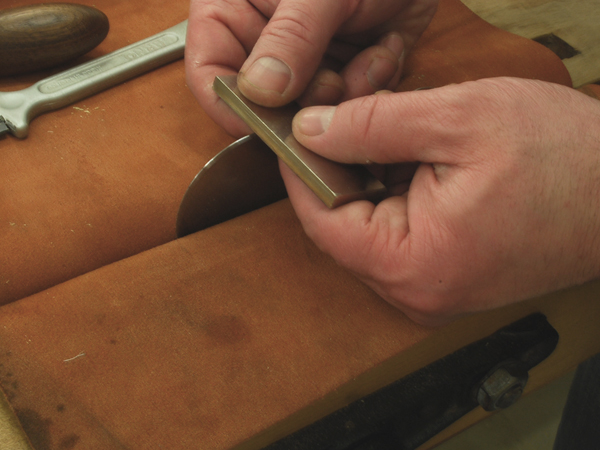How do you sharpen a gooseneck scraper?
Posted by Admin on 25th Nov 2013
Cabinet scrapers are unbeatable for light shaping and cleaning up surfaces, they are oblivious of grain direction, produce no tearout and leave a clean, almost polished surface that maximises the appearance of the timber. As well as coves, hollows, chair seats and the insides of violin backs, gooseneck scrapers are great for accurate spot work where the surrounding flat surface must be left untouched. The eccentric shape of the gooseneck scraper covers all internal radii between 12mm and 220mm.
The key to preparing gooseneck scrapers is to only sharpen the portion of the edge that you need. The procedure is similar to that for a rectangular scraper, but in this case you are better off holding the scraper in a vice and carefully draw filing the edge square with a fine file or slipstones rather than using bench stones. Draw and turn the hook with a carbide burnisher as normal, and you're all set!
Leaning the scraper into the cut will flatten the effective radius slightly (from the wood's perspective) reducing the forward lean, or skewing it very slightly to the direction of cut, will tighten the effective radius, between these two you can 'steer' pretty close to a pre-existing surface. You don't need to match it exactly but the aim is to get close enough to have nice broad shavings that blend together easily.
If you haven't sharpened a scraper before, our sharpening cabinet scrapers video will take you through the process.
All of our scrapers are made by ARNO, if you have never heard of ARNO before, here's an independent review of the ARNO carbide burnisher.




